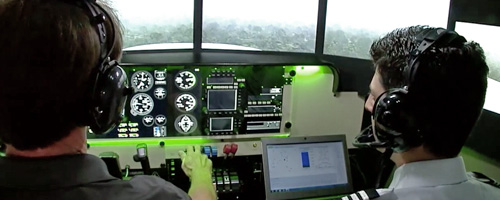Aging Pilot

The studies are in … if you’re an older pilot you need to ... fly more!
Despite what many may think, the key to staying safe as an aging pilot is to get out and fly as often as you can! It’s an undeniable fact that as we age, our bodies change. As a pilot this has significant implications on a hobby that we love. The good news is that by continuing to fly regularly, or even more often will help to maintain our stick and rudder skills, but more importantly it helps to keep our brain alert to the many dynamics of aviation.
Airmanship

The Airmanship series explores various aspects of aviation that will help you to be better prepared for your flight, and to ultimately fly smarter and safer.
Emergency Operations

Emergency and abnormal operations unexpected situations that require good pilot decision-making before an incident occurs as well as a quick response if an emergency does arise.
Winter Flying

The winter months can bring beautifully smooth, dense air that truly makes flying enjoyable.
Cool temperatures, however, present various challenges to pilots. This series of winter flying videos provides information about engine, airframe, de-icing and runway considerations.
Float Planes

One of the most rewarding aspects of floatplane flying is the unlimited opportunities for exploring our country’s vast number of lakes, rivers and coastal areas.
Learn important elements of float plans that require special attention as well as taking the proper steps that are critical for safe float plane operation.
Upset Training

One of the most dangerous types of aircraft accidents is the kind that falls under the general heading of “Aircraft Upsets.” This sudden, drastic loss of control of an aircraft accounts for only 17% of all accidents, however 80% of these incidents result in fatalities.
Moutain Flying

Flying a light single-engine aircraft in mountainous terrain is different from any other form of flying.
The challenges of interacting with the factors of mountains, weather, wind and aircraft can be handled by acquiring some specific knowledge and skills.
And of course, like with any type of flying, mountain flying requires good judgement along with good flying skills.
Aircraft Egress

If you regularly fly over water as a pilot or passenger this is a must view video. As a passenger, Bryan Webster experienced a crash landing into water early in his aviation career. What Bryan learned from surviving that life threatening situation stayed with him throughout his 25 year plus commercial aviation career. While looking for an aircraft egress training course in the mid 1990's, he discovered that none existed for pilots outside of the military, so he recognized the need and developed one himself. In this video we learn the importance of taking an egress training course and being prepared for an emergency over water.
Uncontrolled Aerodromes

One of the realities behind living in the second largest country in the world is that the only way to reach many parts of Canada is by Aircraft.
As a result, Canada is populated by a huge number of places to land – everything from International Airports, to smaller General Aviation Aerodromes, to thousands of privately-owned airstrips spread from coast to coast to coast.
The purpose of this video is to either acquaint, or more likely, reacquaint you with the correct way to operate out of the different kinds of landing strips you’ll encounter while flying across this vast nation.
VFR into IMC

How long can a pilot who has no instrument training expect to live after they fly into bad weather and lose visual contact with the ground? SmartPilot.ca puts the question to the test!






